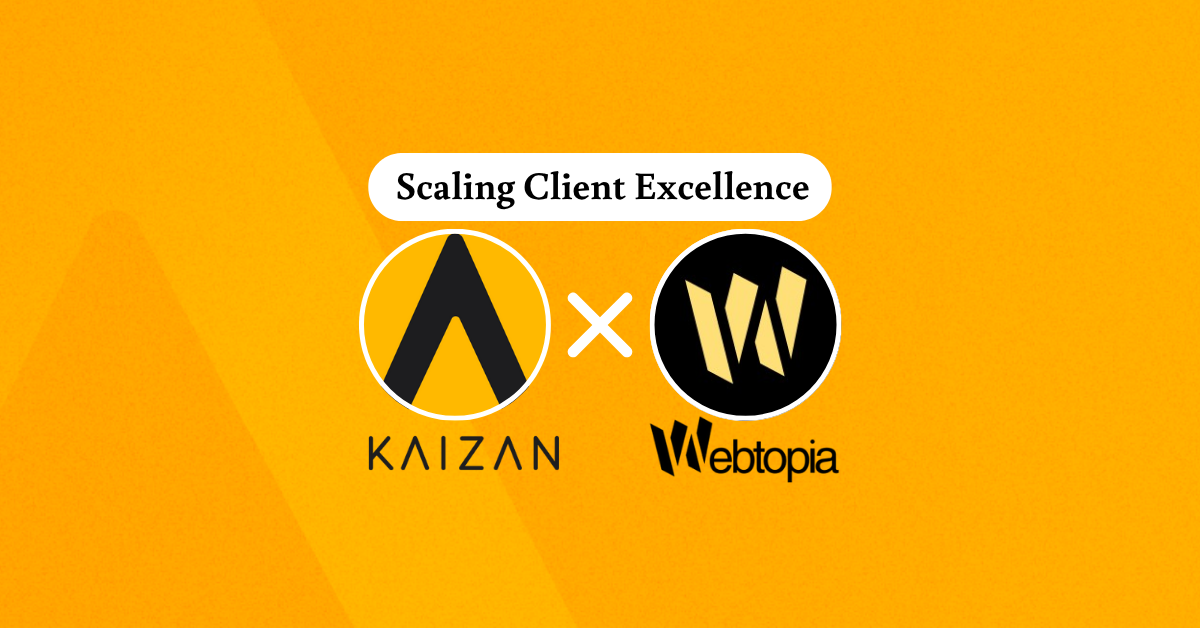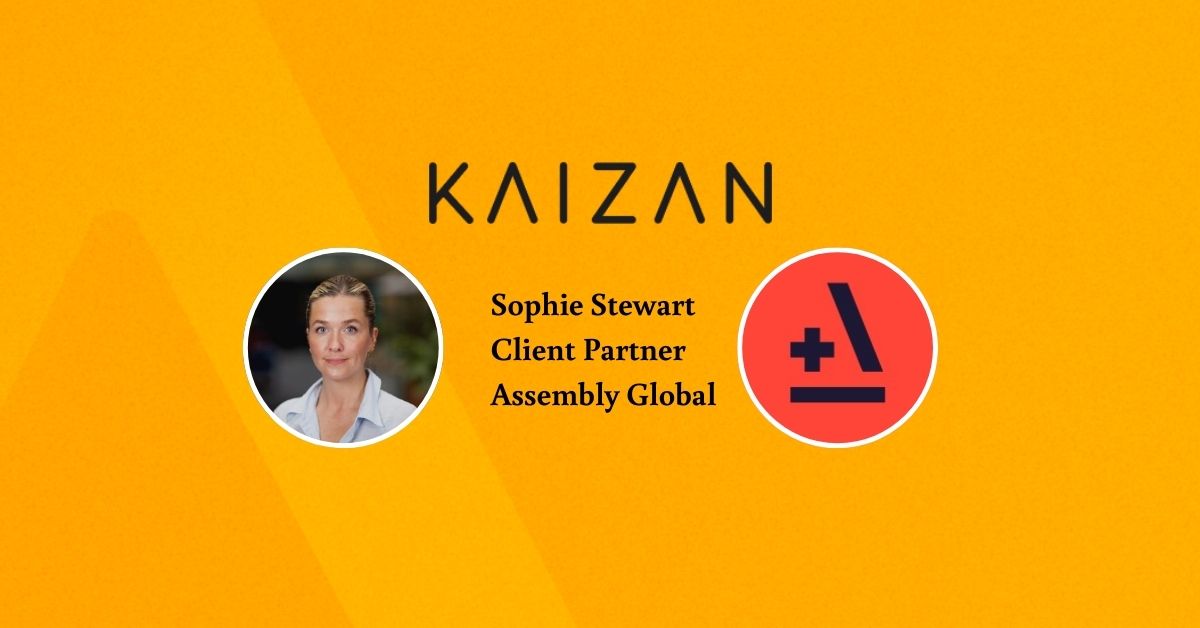Lessons from scaling CS teams: What Works (And What Doesn’t)

Lessons from scaling CS teams: What Works (And What Doesn’t)
Bianca’s been through the CS wars.
From enterprise chatbots in the pre-ChatGPT era to leading teams through acquisitions and market downturns, she’s seen Customer Success evolve from scrappy startup function to boardroom priority – and back again.
In a candid conversation with Kaizan CEO Glen Calvert, she shared the unvarnished truth about what’s working, what’s failing, and why the “throw bodies at the problem” era of CS is officially over.
The Market Reality: From White Glove to Budget Cuts
The CS world has whiplashed hard over the past few years.
Remember when every SaaS company was hiring CSMs like they were going out of style?
“CS job postings, you know, a few years back, just before we sort of saw the market take a shift, it was in a throw bodies at the problem type of perspective. We need to throw bodies at the problem. If we have a churn issue, every single customer needs a CSM. Support is not enough. Customers expect white glove service.”
Then came the reality check. Growth-at-all-costs died overnight, replaced by demands for profitability and efficiency. CS teams, once darlings of the org chart, became prime targets for layoffs.
The kicker? Companies are cutting CS staff without replacing the service level they’ve trained customers to expect. It’s like promising someone a personal butler, then handing them a chatbot and hoping they don’t notice.
The “Cool Girl” Factor: Why Some CSMs Just Work
Finding great CS Managers is HARD.
Top-performing CSMs have a quality that can’t be taught or replicated – what Bianca calls the “cool girl” energy.
“I call it the cool girl quality, I’ve had a couple of these folks where they, they are hardworking, they are smart, but they also have a thing where customers want them to like them. They actually can pick up on this. I call it the cool girl mentality, but it’d be a cool guy too. The cool girl, the customer identifies, has a je ne sais quoi, and goes, I want whatever that person has.”
It’s that person from high school who was popular but also genuinely nice to everyone. You know the type – the one you couldn’t quite figure out but definitely wanted to be around. In CS terms, it’s the CSM whose customers actively try to be their favourite account.
The Hard Truth: Relationships Don’t Trump Results
While the cool factor is nice to have, it won’t save a failing relationship if the product isn’t delivering.
“I think that that je ne sais quoi is gravy, but it will only last so long if the customer is seeing results. And if they’re not for an extended period of time, then no amount of relationship is going to save you.”
The relationship-building qualities matter most when customers struggle to articulate what they actually want – helping pull out their real goals, their boss’s expectations, what they personally need to achieve to get promoted. But if you’re just taking clients out for drinks while their ROAS tanks, that relationship isn’t going to survive budget season.
“It’s that phrase like, what have you done for me lately? If you can’t answer that question definitively, then you will turn your customer out. And I don’t care how cool girl you are.”
The AI Integration Reality: It’s Going to Be Bumpy
On AI’s role in CS, Bianca takes a refreshingly practical stance. Companies are going to keep investing in AI for cost savings, but the rollout won’t be smooth.
“Setting those expectations with the customer early on so that the customer understands how this benefits them…”
Her advice? Be upfront about the transition. Tell customers you’re implementing AI efficiencies that keep costs down rather than raising prices. Frame it as “we appreciate your patience while we upgrade” rather than pretending everything is seamless.
The Tools Question: Adapt
When it comes to CS platforms and tech stacks, Bianca advocates for intellectual humility:
“I try not to say ‘Well, I did this at my last company…’ I really try not to bring that mentality that I can’t learn something new or that just because I used it at the last three companies that it is the best one.”
She tells a story about joining a company that had spent eight months and substantial budget on a CS platform that still wasn’t launched. Her recommendation? Scrap it entirely and fix their messy Salesforce data first.
“You do not have enough data in your Salesforce. Your Salesforce is a mess. Why don’t we invest there? That will pay for itself in spades. All we’re doing is getting ourselves further away from the data.”
It took guts to tell the board they should kill a major software investment as the new hire, but it was the right call. Sometimes the best tech stack decision is admitting you’re not ready for the shiny new tool yet.
Lessons Picked Up Through Hard Experience
Bianca shares a war story from her chatbot days that still haunts her. A luxury brand client tested their complex decision-tree chatbot and asked it a question that hit the catchall response. When they complained that the bot couldn’t answer a “simple” question, Bianca could have handled it better.
“I said, ‘because we didn’t tell it to answer that question. We have to tell it to do things. If you want us to answer that question, we can write that script and we can build it.’ Unfortunately we got into the weeds, and this back and forth.”
The situation escalated and Bianca’s boss ultimately removed the account from her portfolio. Years later, she still uses it as a coaching example.
“This customer wasn’t stupid. I hadn’t taken a step back to properly explain to them, that they were buying a chat-bot. Not a Jetsons-like robot or ChatGPT (that didn’t exist yet). They were buying a decision tree, and somewhere along the way I had not communicated that.”
It’s a reminder that customer education failures often masquerade as customer stupidity. The best CSMs zoom out from tactical problems to identify the upstream communication gaps that created them.
The Renewal Manager Evolution
As companies restructure their CS operations, Bianca’s seeing more organizations split renewal responsibilities from ongoing relationship management.
Renewal managers get wheeled out for contract negotiations—focused purely on retaining every dollar, even without growth.
“They’re really going to be caring about saving every single last dollar. Even if there isn’t growth. And I think that’s a key distinction that you’re going to have with them than a salesperson.”
Whether this model works depends on organization size, product complexity, and sales cycles. For smaller teams where CSMs are already stretched thin, she’d rather invest in right-sizing CSM portfolios than adding another layer.
The Product Feedback Challenge: Revenue Context Matters
Getting customer insights to product teams effectively requires more than just ticketing systems and feature requests. Product teams need to understand the revenue implications of their decisions.
“We often keep products pretty isolated from revenue. And I think that that can often be a mistake because product needs to know what revenue they are ultimately supporting. And when they make decisions about where to invest their time… then they need to know what that is also sacrificing.”
Are you losing customers to competitors with specific functionality? Are you prepared to keep losing those customers because you can generate more revenue elsewhere? These are the conversations product needs to be part of.
The Shape-Shifter Reality
Perhaps Bianca’s most important insight is about CS itself: it’s different at every company, and there’s no universal playbook.
“CS is this shape-shifter at every organization that you go to. And there is going to be a lot of overlap and a lot of skills that you can bring to the table. But I can tell you that the hires that I’m making at Later are different than the ones that I made at Tagger, Sprout Social, or Snaps.”
Even with similar titles and job descriptions, the actual requirements vary dramatically based on the business stage, product complexity, and market dynamics. The most successful CS leaders bring core skills but apply them in customized ways rather than following a one-size-fits-all approach.
As the CS function continues evolving through market pressures and technological advances, leaders like Bianca are figuring out what actually works versus what sounds good in theory.
The era of unlimited CS hiring is over, but the need for thoughtful, results-driven customer success has never been higher.
The winners will be those who can adapt their approach to each unique business context while maintaining focus on the fundamentals: delivering measurable value and clearly communicating that value to customers who are increasingly asking, “What have you done for me lately?”
Based on a conversation between Bianca Ker, VP Client Success at Later, and Glen Calvert, CEO of Kaizan.



